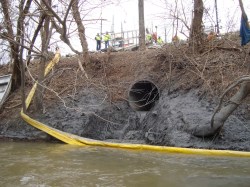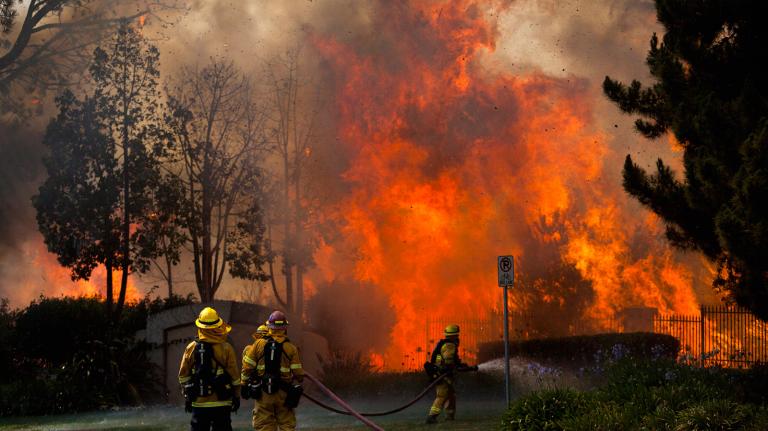 Guess what – you might be living near a toxic coal ash dump that threatens your local water supply, without even knowing it. Today, the Sierra Club and Earthjustice are releasing a new report called “Dangerous Waters: America’s Coal Ash Crisis” that highlights some of the most unsafe coal ash sites in the nation.
Guess what – you might be living near a toxic coal ash dump that threatens your local water supply, without even knowing it. Today, the Sierra Club and Earthjustice are releasing a new report called “Dangerous Waters: America’s Coal Ash Crisis” that highlights some of the most unsafe coal ash sites in the nation.
Imagine living next to an unlined waste pit that leaked arsenic, lead, mercury, and scads of other toxins into your local groundwater, streams and rivers. What’s more, imagine that those millions of gallons of this toxic sludge burst through its aging impoundment and fouled your drinking water, wrecked your local economy, or even inundated your community, destroying homes and endangering the lives of your family or your neighbors?
These are the realities and threats that millions of Americans face every day living near coal ash impoundments. Coal ash is what’s left behind when power plants burn coal for electricity – and it contains a toxic mixture of dangerous chemicals. Shockingly, despite decades of advocacy, there are still NO national standards in place for the safe disposal of coal ash.
This year has been marked by tragic coal pollution spills into our waterways, including the third-largest spill of toxic coal ash in U.S. history, which devastated over 70 miles of the Dan River in North Carolina and Virginia. The Dan River spill was a grim reminder of the sorry state of coal ash regulation in this country. Because we lack federal standards for safely disposing of coal ash, it has been left to the states, and most of them lack either the resources or the will to address the problem.
 Every year, the nation’s coal plants produce 140 million tons of coal ash pollution, the second biggest waste stream in the country, after household garbage. All that ash has to go somewhere, so much of it is dumped in the backyards of power plants across the nation, into open-air pits and precarious surface waste ponds. Coal ash waste is stored in more than 1,400 sites in 45 states.
Every year, the nation’s coal plants produce 140 million tons of coal ash pollution, the second biggest waste stream in the country, after household garbage. All that ash has to go somewhere, so much of it is dumped in the backyards of power plants across the nation, into open-air pits and precarious surface waste ponds. Coal ash waste is stored in more than 1,400 sites in 45 states.
Today’s report from the Sierra Club, Earthjustice, makes a powerful case for strong, federally enforceable safeguards to end rampant toxic pollution from coal-fired power plants across the nation. The report highlights dangerous coal ash sites in Illinois, Indiana, Kentucky, Missouri, Montana, New Mexico, North Carolina, and Virginia, and it illustrates the ongoing damage and risks to public health from this toxic, largely unregulated solid waste.
Most of the 1,400 coal ash storage sites across the U.S. lack adequate safeguards, leaving nearby communities at risk from potential large-scale disasters like the massive coal ash spill in Tennessee in 2008 or the Duke Energy coal ash breach into the Dan River earlier this year. If that’s not enough, communities are also at risk from slow-motion disasters as coal ash toxins seep into drinking water sources or are blown into nearby communities.
The U.S. Environmental Protection Agency (EPA) found that people who live near certain types of unlined coal ash pond and whose drinking water source is groundwater have a 1 in 50 chance of getting cancer from water contaminated by arsenic— a risk 2,000 times greater than the EPA’s goal for reducing cancer risk and significantly higher than the risk of smoking a pack of cigarettes a day. According to the EPA, 1.54 million American children live near coal ash storage sites.
Another harrowing statistic from the EPA: coal ash has contaminated waters at 200 sites in 37 states across the country!
As communities face toxic water contamination or coal ash blowing from nearby coal ash landfills coating their homes and yards with toxic dust, they’re saying enough is enough – and the Sierra Club is standing with them. We’re there as communities demand action from the EPA, and we’re there as they demand action from utilities and coal companies who are risking the health of our families and the vitality of our waterways.
The EPA is under a court order to finalize national coal ash protections this December, but whether or not those protections will be strong and enforceable is an open question. We need your help – join us in calling for strong coal ash safeguards from the EPA.


